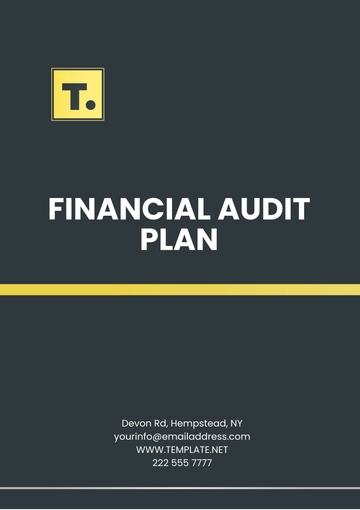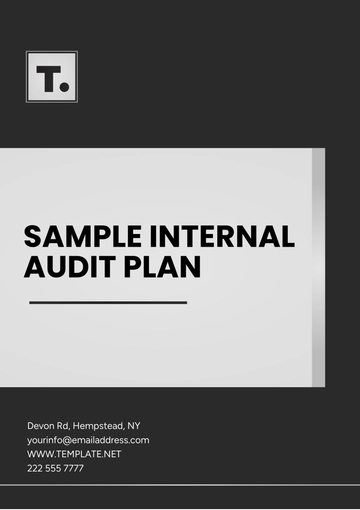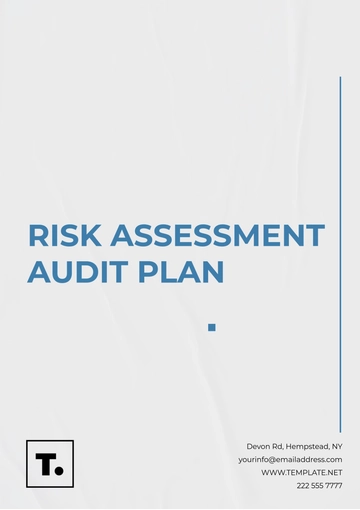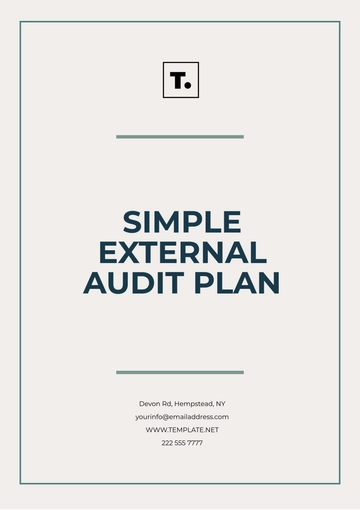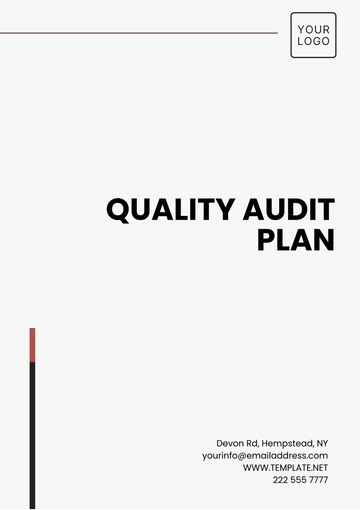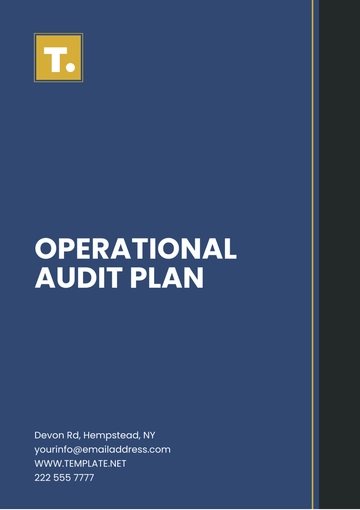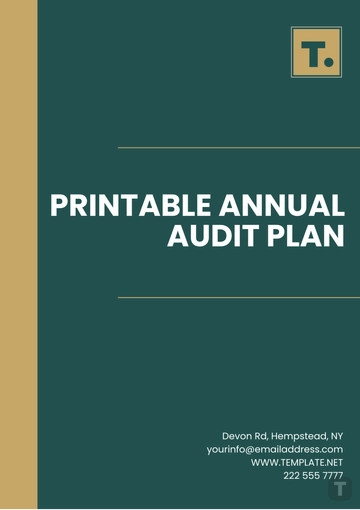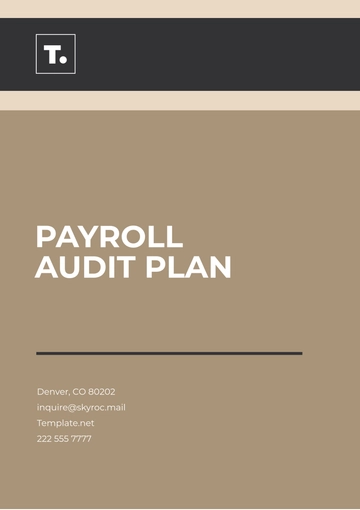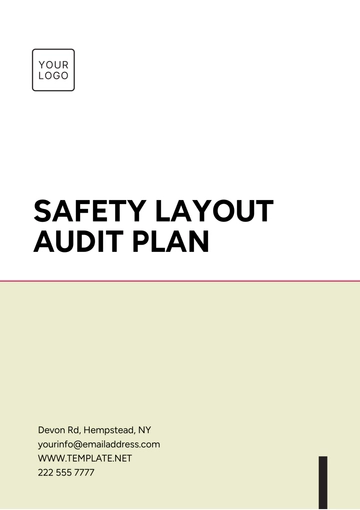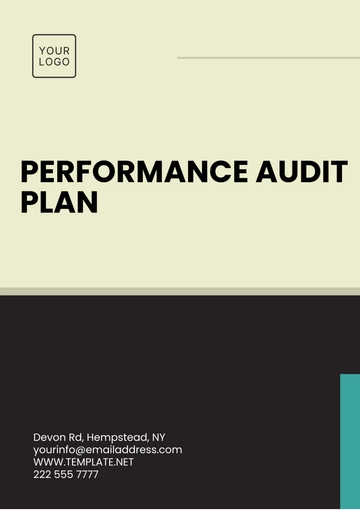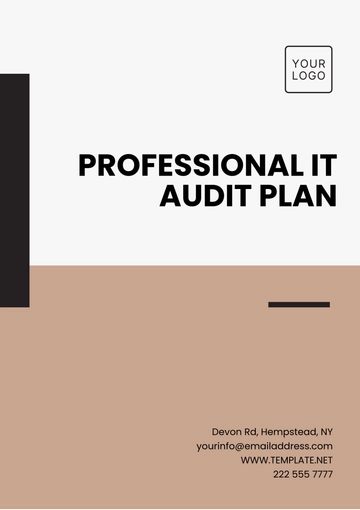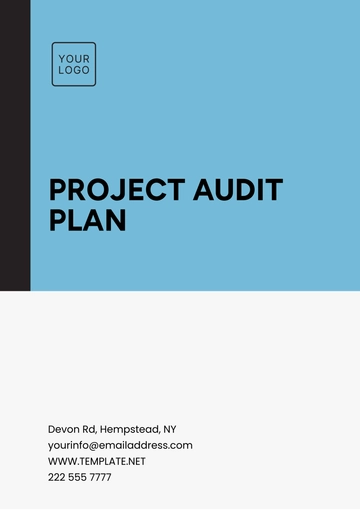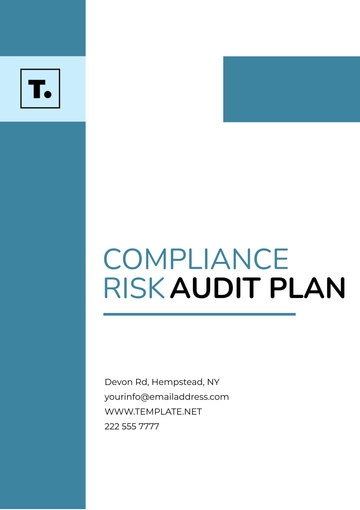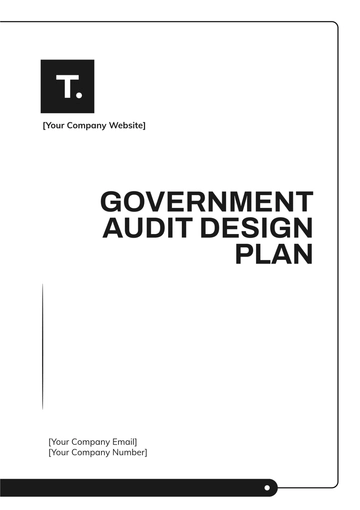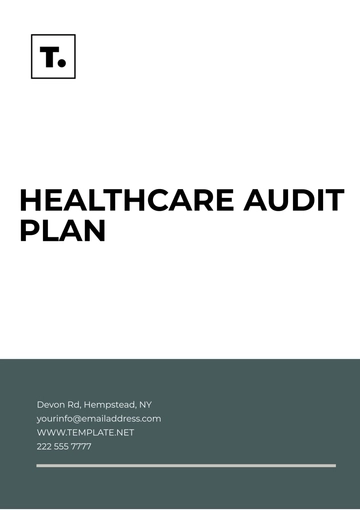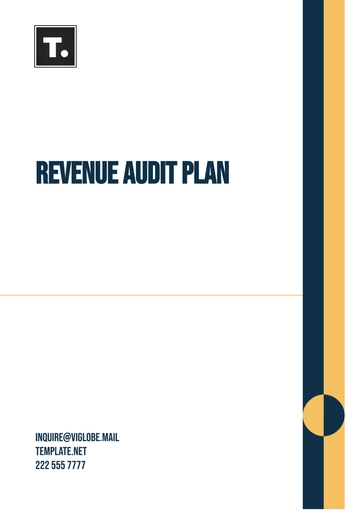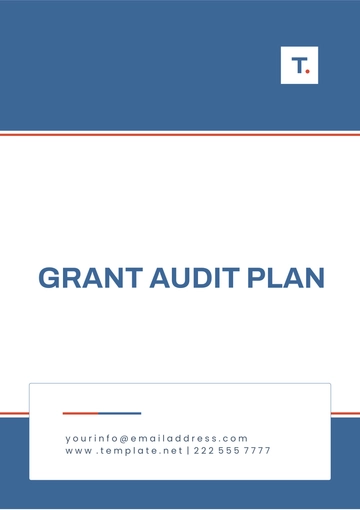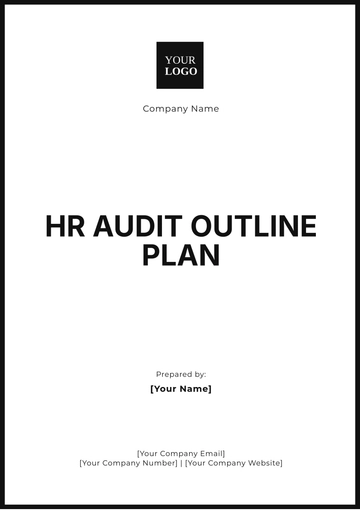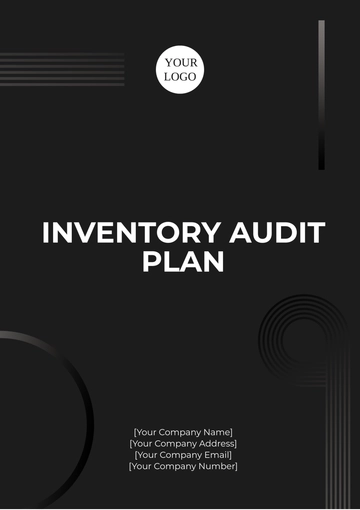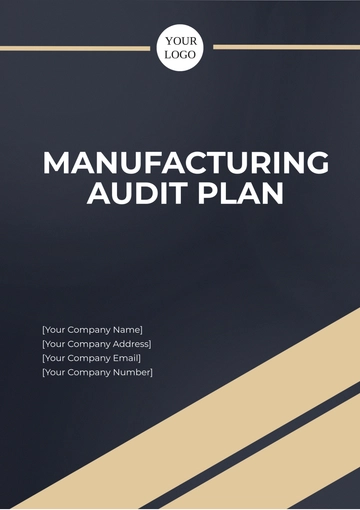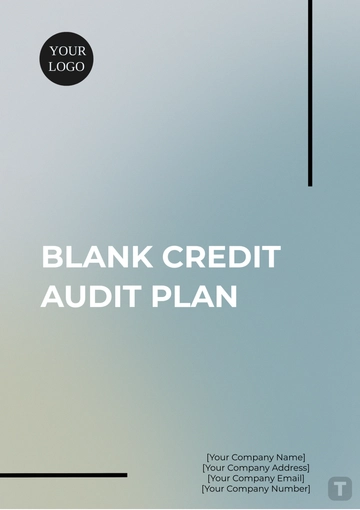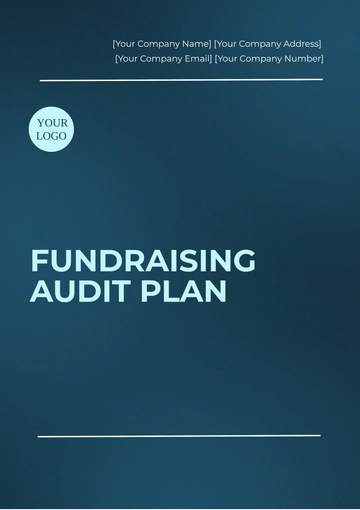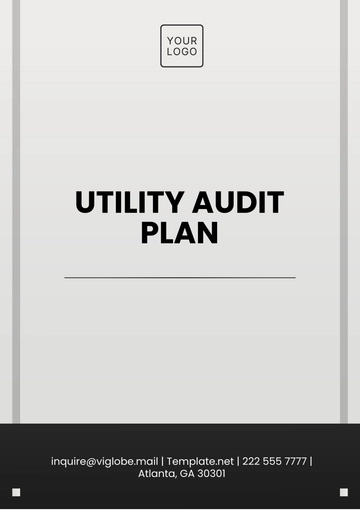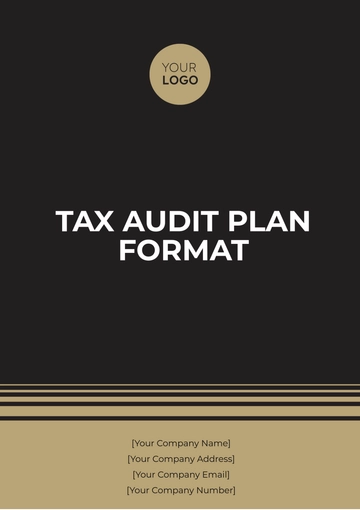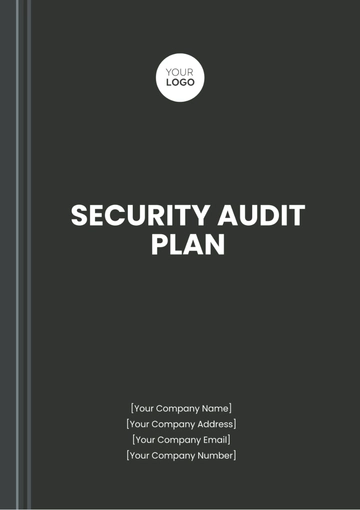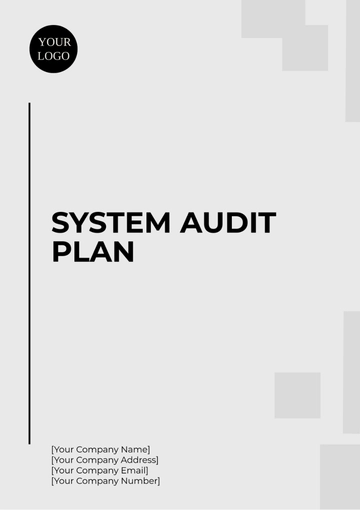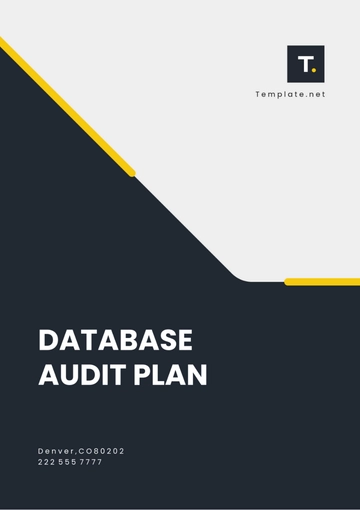Free Travel Agency Audit Plan
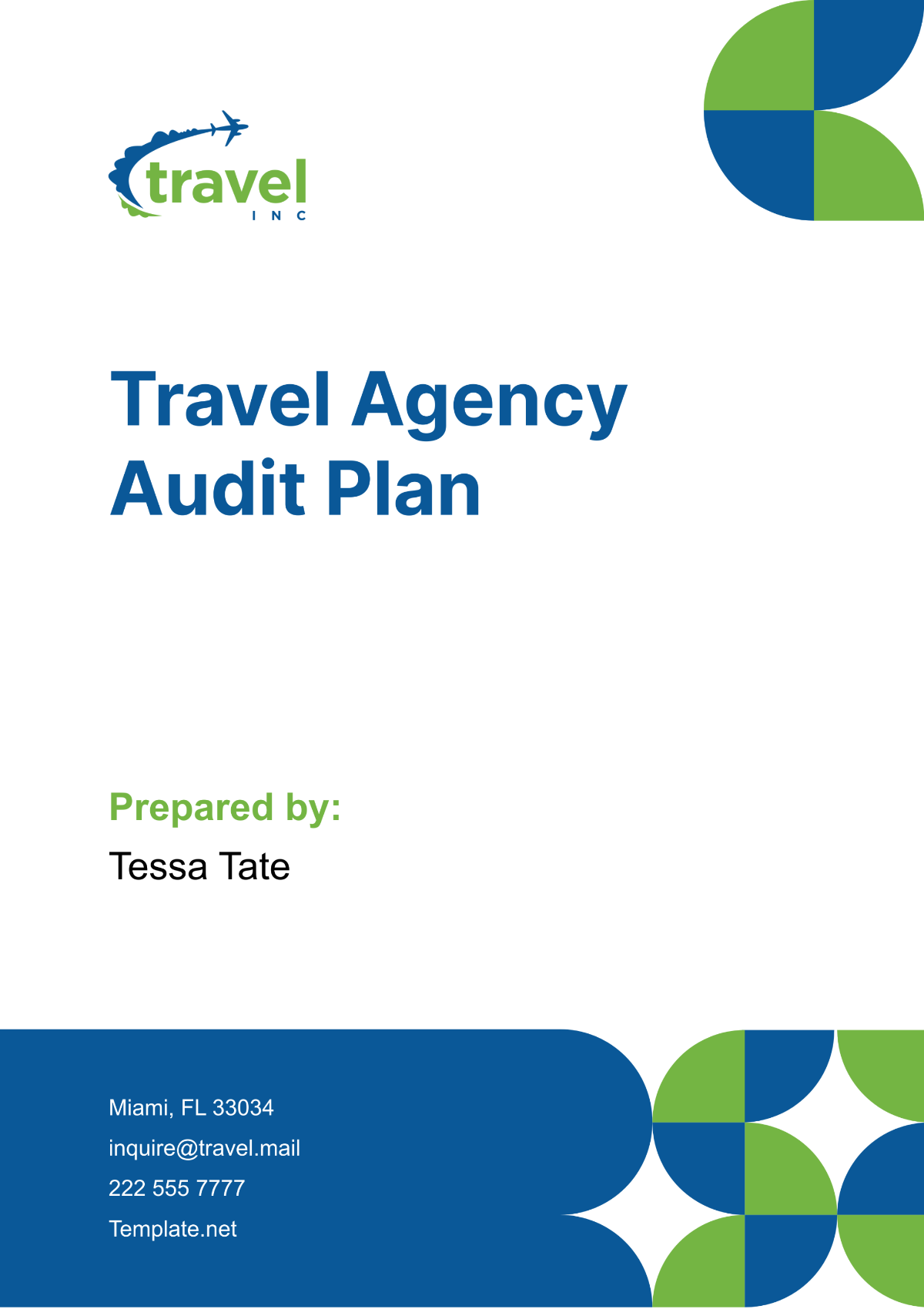
I. Introduction
This Travel Agency Audit Plan serves as a foundational blueprint to rigorously assess both the financial and operational frameworks of the agency. It meticulously outlines the advanced methodologies and strategic approaches necessary for conducting a holistic audit. The aim is not only to reinforce financial accuracy and compliance with pertinent regulations but also to refine operational processes, thus driving enhanced performance and ensuring the long-term sustainability of [Your Company Name].
The plan prioritizes transparency and accountability, setting the stage for systematic reviews that encompass financial audits, operational assessments, and compliance checks. Each component is designed to align with industry best practices and adapt to evolving market conditions. By implementing this plan, [Your Company Name] commits to maintaining the highest standards of integrity and efficiency, essential for fostering trust and growth in the competitive travel industry landscape.
II. Objectives of the Audit
This section delineates the fundamental objectives of the Travel Agency Audit for [Your Company Name], aimed at enhancing financial accuracy, operational efficiency, and compliance integrity. The table below concisely summarizes the key goals, which focus on verifying financial statements, assessing internal controls, identifying risks, providing strategic recommendations, and optimizing operational processes. This systematic approach is designed to fortify both financial health and market reputation.
Objective | Description | Expected Outcome |
|---|---|---|
Verification of Financial Statements | Conduct a detailed examination of all financial records to ensure their accuracy and completeness. | Assurance of financial statement integrity and reliability. |
Assessment of Internal Controls | Evaluate the effectiveness of the control systems within various departments to prevent errors and fraud. | Enhanced security and efficiency in financial reporting. |
Risk Identification | Identify potential financial and operational risks that could impact the agency's stability and reputation. | Early detection of threats to mitigate impact on the agency. |
Provision of Actionable Recommendations | Generate practical, informed recommendations for management to address identified issues. | Strategic guidance for continuous improvement and decision-making. |
Enhancement of Operational Efficiencies | Analyze current operational processes to pinpoint redundancies and inefficiencies, recommending solutions to enhance overall operational flow and productivity. | Increased operational efficiency and resource optimization. |
III. Audit Scope
The Audit Scope section meticulously defines the range of areas subject to review within [Your Company Name]'s operations. It aims to cover critical operational facets including financial records, compliance logs, operational procedures, information systems, and HR practices. This structured evaluation ensures a comprehensive understanding of the agency's functionality and adherence to industry standards. Below is a detailed table outlining each key area and its focus points.
Audit Area | Focus Points | Purpose |
|---|---|---|
Financial Records | Review of all financial transactions and statements from the past fiscal year. | To ensure accuracy, completeness, and integrity of financial reporting. |
Compliance Adherence Logs | Examination of logs related to adherence to travel regulations and safety standards. | To verify compliance with all relevant laws, regulations, and standards affecting the travel industry. |
Operational Procedures | Assessment of customer engagements, booking processes, and vendor management. | To enhance efficiency and effectiveness in customer service and supply chain management. |
Information Systems | Evaluation of systems used for bookings, financial accounting, and customer management. | To ascertain the reliability and security of technology systems supporting operational processes. |
Human Resources Policies | Analysis of policies and practices concerning employee management and performance monitoring. | To ensure fair, consistent, and effective HR practices that support strategic objectives and compliance. |
This comprehensive scope enables a thorough audit that not only assesses the current state but also identifies areas for potential improvement, ensuring that [Your Company Name] operates at the highest standards of efficiency and compliance.
IV. Methodology
The Methodology section of the Travel Agency Audit Plan for [Your Company Name] outlines a robust approach combining document review, personnel interviews, and observational procedures to ensure comprehensive audit coverage. This systematic methodology is designed to identify inconsistencies, verify information accuracy, and enhance overall operational security. Below is a detailed table highlighting the specific methods and their objectives.
Method | Description | Objectives |
|---|---|---|
Sampling of Transaction Records | Random and targeted sampling of financial transactions to spot irregularities. | To detect anomalies or inconsistencies that could indicate errors or fraud. |
Interviews with Key Personnel | Engaging with staff at various levels to validate information and gain insights. | To cross-verify operational data and gather qualitative insights from employees. |
Analytical Software Usage | Utilization of advanced software tools to analyze data for integrity and anomalies. | To automate the detection of irregular patterns and ensure data accuracy. |
Physical Inspections | On-site checks of physical workspaces and operational environments. | To assess the physical aspects of operations and compliance with safety standards. |
IT Systems Security Assessment | Comprehensive review of cybersecurity measures and data management systems. | To evaluate the security and efficiency of IT systems managing sensitive information. |
This methodical approach ensures that every aspect of [Your Company Name]'s operations is scrutinized for compliance, efficiency, and security, ultimately supporting the goal of upholding the highest standards of operational integrity and reliability.
V. Data Collection
This section outlines the strategic approaches for gathering necessary information during the audit of [Your Company Name]. This process is crucial for ensuring a successful and thorough review of the agency's operations. The methods listed below are designed to collect data efficiently and effectively, ensuring comprehensive coverage across all audit areas. Here’s a detailed table outlining the data collection techniques and their respective purposes:
Data Collection Method | Description | Purpose |
|---|---|---|
Structured Questionnaires | Distributing tailored questionnaires to operational staff and management. | To gather standardized information from employees across various levels for consistent analysis. |
Compliance Checklists | Utilizing detailed checklists to verify adherence to specific regulations. | To methodically confirm compliance with travel and safety regulations relevant to the agency. |
Software Tools for Data Extraction | Employing software for efficient extraction and analysis of data from financial systems. | To automate the process of pulling and verifying financial data, enhancing accuracy and speed. |
Document Requests | Sending advanced requests for essential documents such as contracts and receipts. | To ensure all necessary documents are available for review, minimizing delays during the audit. |
Direct Observations | Conducting onsite visits to observe and record operational practices firsthand. | To visually and physically assess operational workflows and the environment for real-time insights. |
Each data collection method is chosen for its effectiveness in providing insights into different aspects of the travel agency’s operations, aiding in a thorough and accurate audit process.
VI. Risk Assessment
The Risk Assessment segment of the Travel Agency Audit Plan for [Your Company Name] is vital for pinpointing and evaluating potential risks that could impact various aspects of the agency's operations. This methodical approach categorizes each risk and prescribes specific control measures to mitigate them effectively. Below is a detailed table that outlines the risk categories, examples of potential risks, and the corresponding control measures implemented to safeguard the agency.
Risk Category | Examples | Control Measures | Description of Measures |
|---|---|---|---|
Financial | Misreporting, Fraud | Regular reconciliations, Strong audit trails | Regular reconciliations ensure all financial activities match recorded transactions, minimizing errors. Strong audit trails provide clear records for tracking and verification purposes. |
Operational | Process delays, Service failures | Process redesign, Adequate staff training | Process redesign involves restructuring operations for efficiency, reducing delays. Adequate staff training ensures all personnel are proficient in their roles, minimizing service disruptions. |
Compliance | Non-adherence to travel laws | Regular updates on legal changes, Compliance checks | Regular updates on legal changes keep the agency current with travel laws. Compliance checks ensure all operations adhere to these laws, avoiding legal issues. |
Reputation | Bad customer reviews, Negative publicity | Customer feedback loops, PR management | Customer feedback loops gather and address customer concerns promptly, improving service quality. PR management handles and mitigates negative publicity to maintain a positive public image. |
Technological | Data breaches, System downtime | Up-to-date security measures, Regular system audits | Up-to-date security measures protect against cyber threats. Regular system audits ensure all IT systems function optimally and securely, preventing downtimes and breaches. |
This comprehensive risk assessment framework helps [Your Company Name] proactively manage and mitigate risks effectively, enhancing overall operational resilience and maintaining trust among stakeholders.
VII. Audit Timeline
The Audit Timeline for [Your Company Name] is meticulously structured to allocate sufficient time for each phase of the audit process, ensuring a thorough and effective evaluation. This detailed timeline is essential for coordinating various audit activities and achieving optimal outcomes. Below is a comprehensive table that outlines each phase of the audit, the duration of each phase, and the specific activities involved to facilitate clarity and efficiency.
Phase | Duration | Activities | Description |
|---|---|---|---|
Preparation and Planning | 2 weeks | Setting audit objectives, developing audit checklists, and finalizing the audit team. | This phase involves aligning audit goals with strategic objectives, organizing resources, and preparing the audit team. |
Data Collection and Fieldwork | 6 weeks | Conducting interviews, gathering documents, and performing on-site observations. | Active data gathering from various sources, including direct observations and document reviews to collect comprehensive information. |
Data Analysis | 4 weeks | Analyzing collected data using statistical tools, identifying trends, and assessing risk. | Deep analysis to extract meaningful insights, identify discrepancies, and evaluate risks based on the gathered data. |
Reporting and Recommendations | 3 weeks | Drafting the audit report, discussing findings with management, and finalizing recommendations. | Creating a detailed report that outlines findings, suggests corrective actions, and provides strategic recommendations. |
Review and Closure | 1 week | Reviewing the final report with stakeholders, addressing any feedback, and formally closing the audit. | Final discussions to ensure all parties agree with the findings and recommendations before officially concluding the audit. |
This timeline ensures that each phase of the audit is conducted with due diligence, allowing [Your Company Name] to systematically address and mitigate risks, improve operational efficiency, and enhance compliance and reporting accuracy.
IX. Reporting and Recommendation
The Reporting and Recommendation phase of the Travel Agency Audit Plan for [Your Company Name] focuses on communicating the audit results effectively, providing a clear roadmap for improvement. This crucial phase ensures that findings are not only presented but are also actioned upon strategically. Below is a detailed table that outlines the contents of the final audit report, each section's purpose, and how it contributes to overall operational enhancement.
Report Section | Contents | Purpose |
|---|---|---|
Executive Summary of Findings | A concise overview of the audit's key findings, highlighting major issues and positive observations. | To provide a quick, comprehensive snapshot of the audit results for executive review, summarizing crucial information. |
Detailed Analysis of Audit Areas | In-depth review of each audited area, with specific findings and data supporting the conclusions. | To delve into the specifics of each area audited, offering a thorough understanding of the operational and financial health. |
Identification of Issues and Implications | Listing of all issues discovered during the audit and their potential impacts on the organization. | To explicitly point out deficiencies or risks, detailing their possible effects on the agency’s operations and reputation. |
Recommendations for Improvement | Strategic advice on how to resolve identified issues and enhance processes. | To provide actionable solutions for rectifying problems and optimizing operations, tailored to the audit findings. |
Action Plan for Management | A step-by-step guide designed for management to implement the recommended changes effectively. | To ensure that the recommendations are translated into concrete actions, guiding management on the path to improvements. |
This structured approach to reporting ensures that all findings from the audit are clearly articulated, understood, and acted upon, facilitating effective decision-making and fostering continuous improvement within [Your Company Name].
X. Feedback and Follow-up
The Feedback and Follow-up phase of the Travel Agency Audit Plan for [Your Company Name] is designed to maintain a continuous improvement loop, ensuring the audit's effectiveness and the successful implementation of recommendations. This phase is vital for engaging with stakeholders, refining processes, and monitoring outcomes. Below is a detailed table outlining the feedback mechanisms, their purposes, and the methods used to facilitate effective follow-up.
Feedback Mechanism | Description | Purpose |
|---|---|---|
Continual Engagement with Agency Staff | Regular interactions with staff during the audit to gather insights and validate findings. | To maintain open communication and gather real-time insights, ensuring that the audit reflects current practices. |
Preventive and Corrective Actions | Immediate actions taken based on preliminary findings to mitigate risks or correct issues. | To address issues promptly, preventing potential escalation and ensuring ongoing compliance and efficiency. |
Scheduled Follow-up Audits | Planning and conducting subsequent audits to review the progress on implemented recommendations. | To monitor the long-term effectiveness of actions taken and ensure continuous alignment with audit objectives. |
Management Feedback Loop | Establishment of a system for management to provide feedback on the audit process and outcomes. | To refine future audits based on management’s experiences and insights, enhancing the audit’s relevance and impact. |
Final Audit Presentation | A comprehensive review session with key stakeholders to discuss the audit’s findings and impact. | To ensure all stakeholders are informed, engaged, and aligned on the audit results and the next steps. |
This framework ensures that the audit is not just a one-time check but a part of a broader strategy for continuous improvement and accountability within [Your Company Name]. It supports the dynamic nature of the travel industry, adapting and evolving as the agency grows and changes.
XI. Conclusion
The Travel Agency Audit Plan designed for [Your Company Name] serves as a critical tool to methodically identify and address areas needing improvement, bolster trust in financial disclosures, and uphold stringent operational standards. This rigorous process is essential not just for protecting the agency’s assets but also for driving its strategic growth. By leveraging detailed insights gained through the audit, the agency can enhance decision-making processes and operational efficiency, positioning itself for sustainable success.
The successful implementation of this audit plan demands rigorous execution and collaborative efforts across various departments. As each segment of the audit is meticulously carried out, it contributes substantially to creating a robust and effective business framework. This collective endeavor not only ensures compliance and security but also fosters an environment of continuous improvement, making [Your Company Name] a paragon of excellence in the travel industry.
- 100% Customizable, free editor
- Access 1 Million+ Templates, photo’s & graphics
- Download or share as a template
- Click and replace photos, graphics, text, backgrounds
- Resize, crop, AI write & more
- Access advanced editor
Elevate your travel agency's operational efficiency with our Travel Agency Audit Plan Template from Template.net. Fully editable and customizable, this template streamlines your audit process, enhancing accuracy and oversight. Editable in our AI Editor Tool, it ensures compliance and boosts productivity. Ensure best practices in your audits, paving the way for improved service and client satisfaction. Optimize your agency's processes today!
You may also like
- Finance Plan
- Construction Plan
- Sales Plan
- Development Plan
- Career Plan
- Budget Plan
- HR Plan
- Education Plan
- Transition Plan
- Work Plan
- Training Plan
- Communication Plan
- Operation Plan
- Health And Safety Plan
- Strategy Plan
- Professional Development Plan
- Advertising Plan
- Risk Management Plan
- Restaurant Plan
- School Plan
- Nursing Home Patient Care Plan
- Nursing Care Plan
- Plan Event
- Startup Plan
- Social Media Plan
- Staffing Plan
- Annual Plan
- Content Plan
- Payment Plan
- Implementation Plan
- Hotel Plan
- Workout Plan
- Accounting Plan
- Campaign Plan
- Essay Plan
- 30 60 90 Day Plan
- Research Plan
- Recruitment Plan
- 90 Day Plan
- Quarterly Plan
- Emergency Plan
- 5 Year Plan
- Gym Plan
- Personal Plan
- IT and Software Plan
- Treatment Plan
- Real Estate Plan
- Law Firm Plan
- Healthcare Plan
- Improvement Plan
- Media Plan
- 5 Year Business Plan
- Learning Plan
- Marketing Campaign Plan
- Travel Agency Plan
- Cleaning Services Plan
- Interior Design Plan
- Performance Plan
- PR Plan
- Birth Plan
- Life Plan
- SEO Plan
- Disaster Recovery Plan
- Continuity Plan
- Launch Plan
- Legal Plan
- Behavior Plan
- Performance Improvement Plan
- Salon Plan
- Security Plan
- Security Management Plan
- Employee Development Plan
- Quality Plan
- Service Improvement Plan
- Growth Plan
- Incident Response Plan
- Basketball Plan
- Emergency Action Plan
- Product Launch Plan
- Spa Plan
- Employee Training Plan
- Data Analysis Plan
- Employee Action Plan
- Territory Plan
- Audit Plan
- Classroom Plan
- Activity Plan
- Parenting Plan
- Care Plan
- Project Execution Plan
- Exercise Plan
- Internship Plan
- Software Development Plan
- Continuous Improvement Plan
- Leave Plan
- 90 Day Sales Plan
- Advertising Agency Plan
- Employee Transition Plan
- Smart Action Plan
- Workplace Safety Plan
- Behavior Change Plan
- Contingency Plan
- Continuity of Operations Plan
- Health Plan
- Quality Control Plan
- Self Plan
- Sports Development Plan
- Change Management Plan
- Ecommerce Plan
- Personal Financial Plan
- Process Improvement Plan
- 30-60-90 Day Sales Plan
- Crisis Management Plan
- Engagement Plan
- Execution Plan
- Pandemic Plan
- Quality Assurance Plan
- Service Continuity Plan
- Agile Project Plan
- Fundraising Plan
- Job Transition Plan
- Asset Maintenance Plan
- Maintenance Plan
- Software Test Plan
- Staff Training and Development Plan
- 3 Year Plan
- Brand Activation Plan
- Release Plan
- Resource Plan
- Risk Mitigation Plan
- Teacher Plan
- 30 60 90 Day Plan for New Manager
- Food Safety Plan
- Food Truck Plan
- Hiring Plan
- Quality Management Plan
- Wellness Plan
- Behavior Intervention Plan
- Bonus Plan
- Investment Plan
- Maternity Leave Plan
- Pandemic Response Plan
- Succession Planning
- Coaching Plan
- Configuration Management Plan
- Remote Work Plan
- Self Care Plan
- Teaching Plan
- 100-Day Plan
- HACCP Plan
- Student Plan
- Sustainability Plan
- 30 60 90 Day Plan for Interview
- Access Plan
- Site Specific Safety Plan

